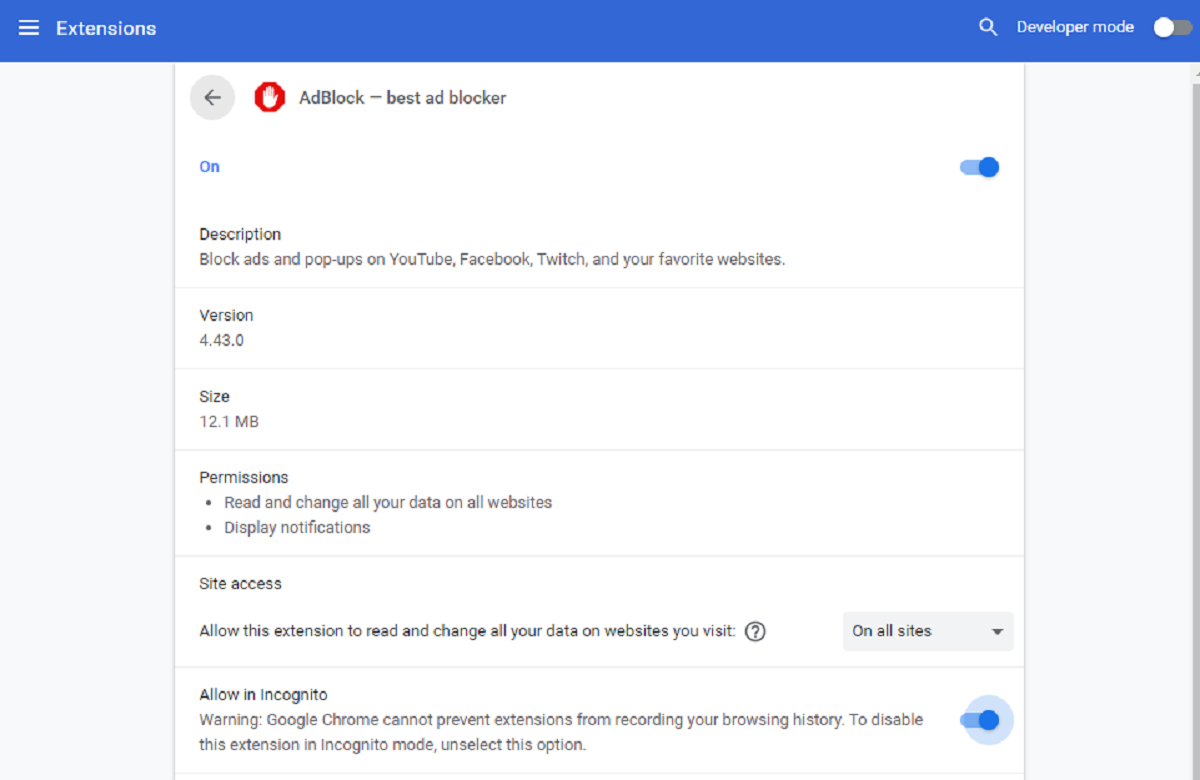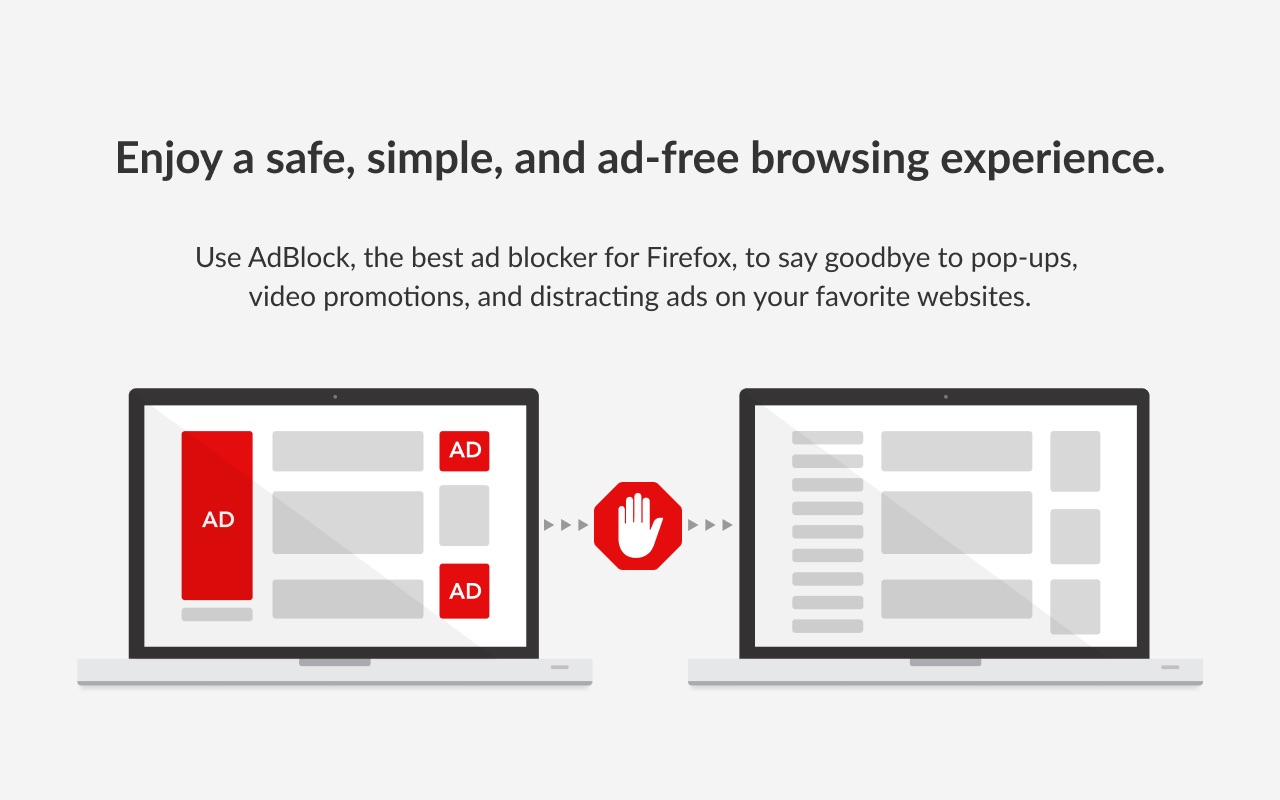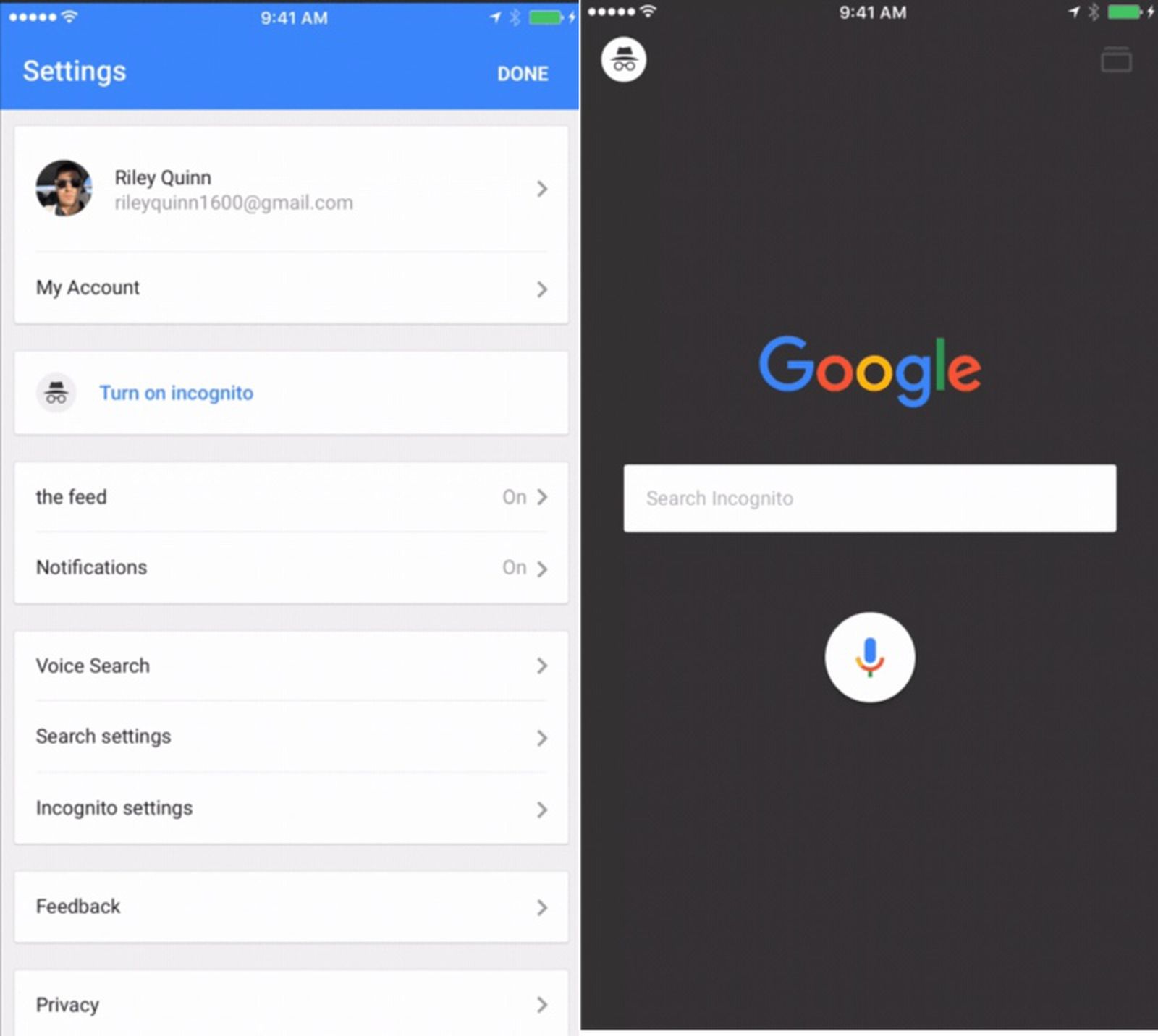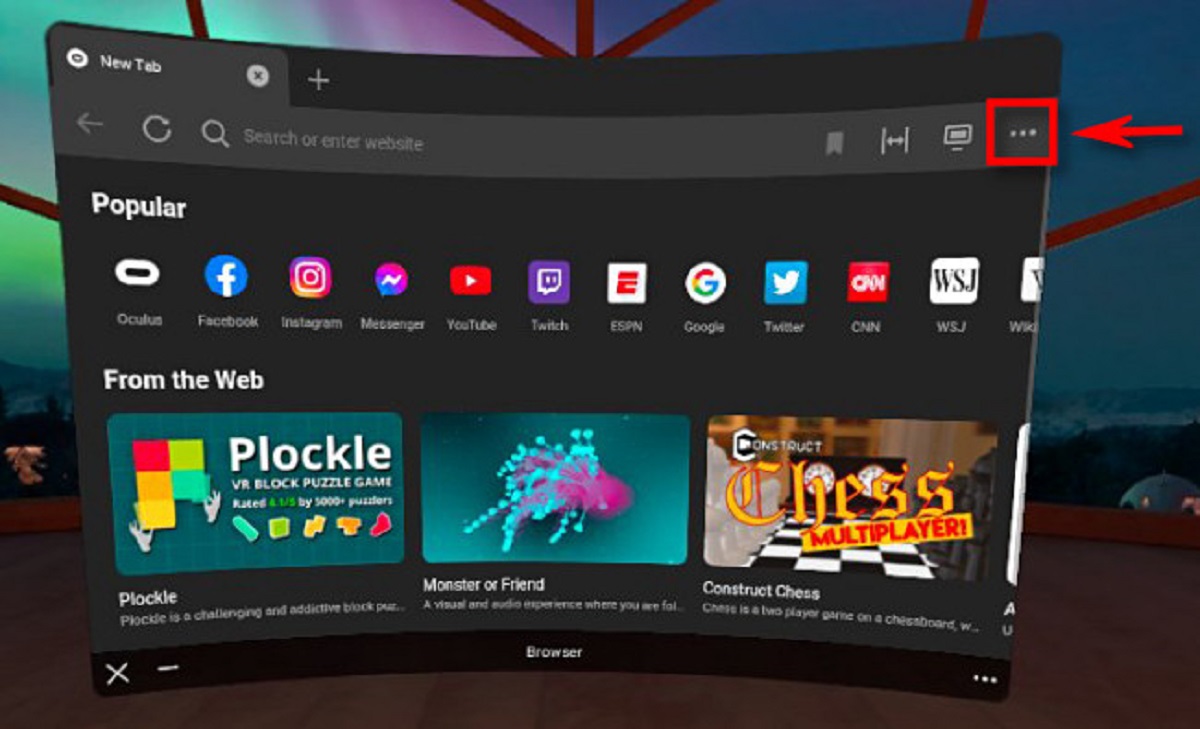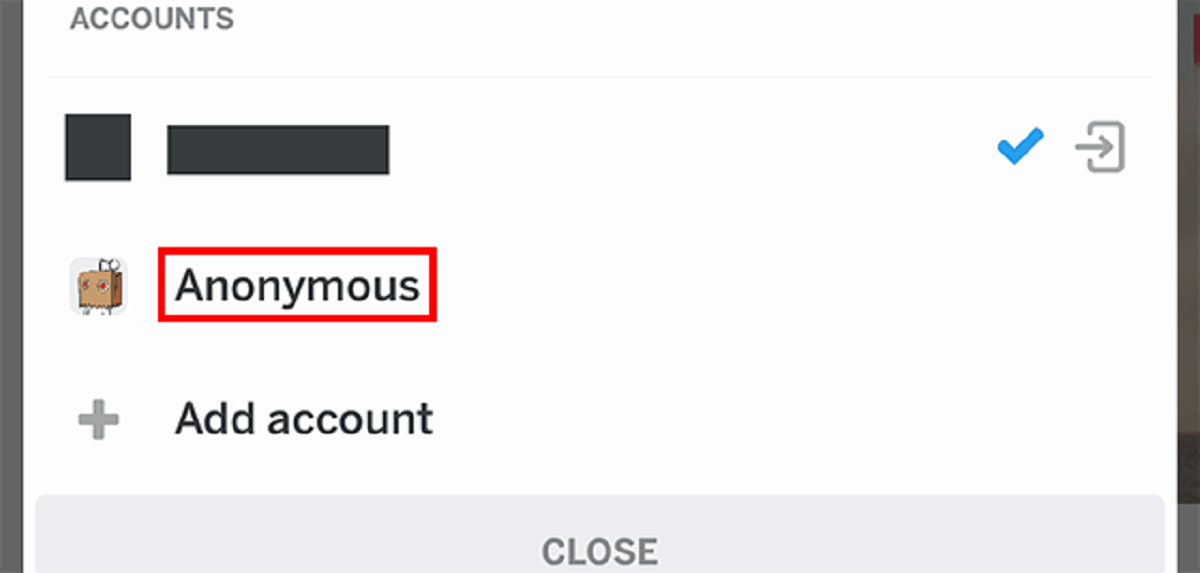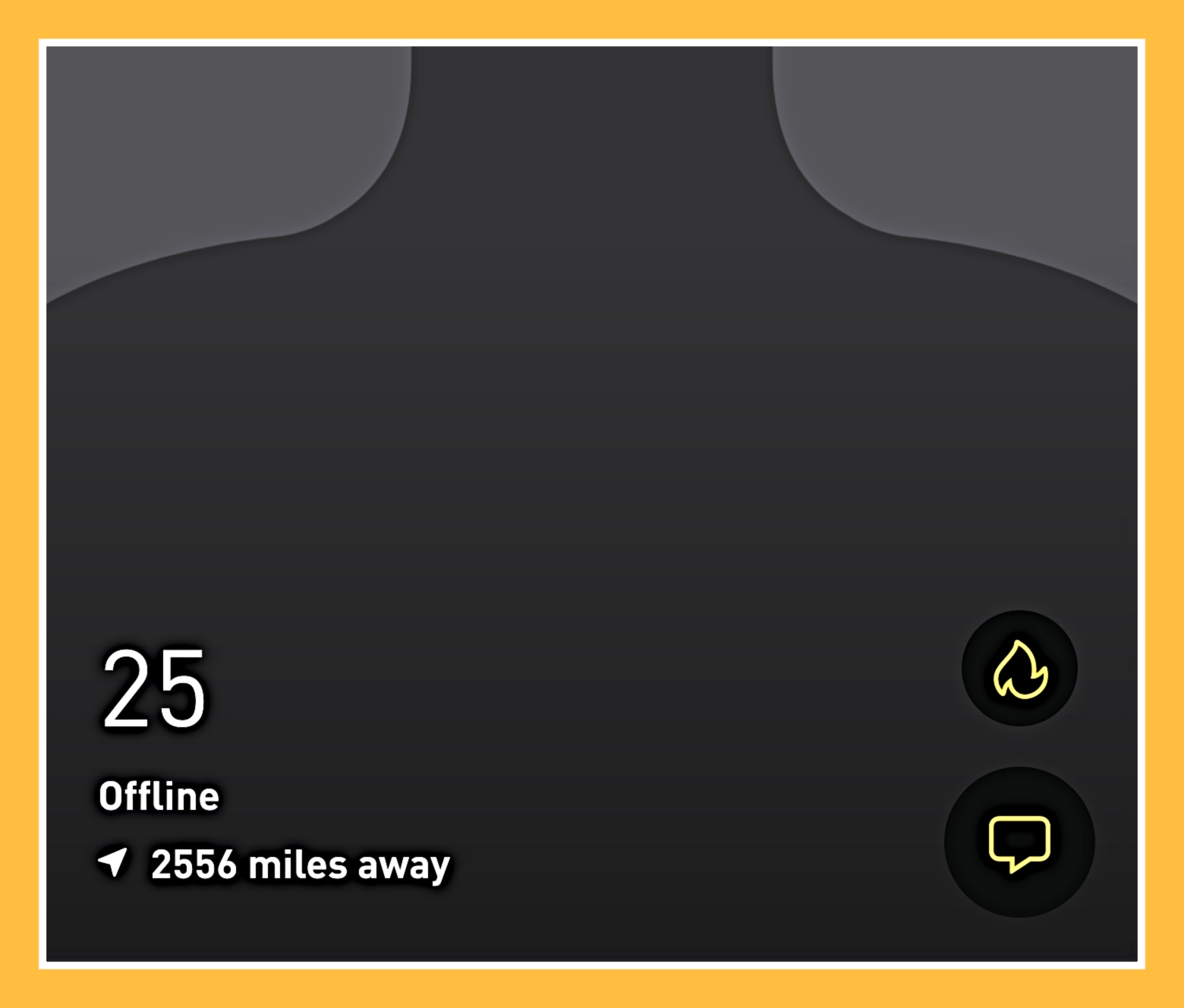Introduction
In today’s digital age, where online advertising is rampant, ads can be intrusive and disruptive to our browsing experience. They can slow down page loading times, consume data, and track our online activities. That’s where an ad-blocking tool like Adblock comes in handy. Adblock is a browser extension that effectively blocks ads across various websites, making our online experience smoother and more enjoyable.
Another feature that many internet users utilize for their privacy is the Incognito mode, available in most web browsers. Incognito mode allows you to browse the web without saving any information locally, such as browsing history or cookies. It’s a great tool for maintaining privacy and preventing websites from tracking your online activities.
But can you use Adblock in Incognito mode? The answer is yes! By enabling Adblock in Incognito mode, you can enjoy ad-free browsing without compromising your privacy. In this article, we will guide you through the process of using Adblock in Incognito mode, step by step. So, let’s dive in and discover how you can combine the power of Adblock and Incognito mode for a seamless and private browsing experience.
What is Adblock?
Adblock is a popular browser extension that allows users to block advertisements while browsing the web. It effectively removes various types of ads, including banner ads, pop-ups, video ads, and even those pesky ads that appear before a YouTube video starts playing.
The primary function of Adblock is to improve the browsing experience by eliminating unwanted ads that can be distracting or annoying. Not only does Adblock remove ads, but it also helps to minimize page loading times, conserve bandwidth, and improve overall website performance.
Adblock works by using a combination of filters, rules, and algorithms to detect and block ads from being displayed on webpages. These filters are regularly updated to keep up with the evolving advertising techniques used by websites.
With Adblock, users have the flexibility to customize their ad-blocking experience. They can choose to whitelist certain websites or specific types of ads that they deem acceptable. This allows users to support their favorite content creators and websites while still enjoying a mostly ad-free browsing experience.
It is important to note that Adblock is available as a browser extension and can be installed on popular web browsers such as Google Chrome, Mozilla Firefox, Safari, and Microsoft Edge. Once installed, Adblock integrates seamlessly into the browser’s interface and provides users with options to manage and configure their ad-blocking settings.
Overall, Adblock is a valuable tool for those who wish to have a cleaner and more streamlined browsing experience. By eliminating distracting and unwanted ads, users can focus on the content they want to consume without interruptions. So, whether you’re annoyed by flashing ads or simply want a faster browsing experience, Adblock is a must-have extension to consider installing on your preferred web browser.
What is Incognito Mode?
Incognito mode, also known as private browsing or privacy mode, is a feature available in most web browsers that allows users to browse the internet privately. When you enter incognito mode, the browser does not save certain information, such as browsing history, cookies, or cached files on your device.
The primary purpose of incognito mode is to provide users with a higher level of privacy and a temporary browsing session that does not leave a trail of online activities. This can be especially useful when using a shared computer or accessing the internet in a public place where you want to keep your browsing history and personal information private.
When you open a new incognito window, the browser treats it as a separate session, isolated from your regular browsing activities. This means that any websites you visit, searches you perform, or forms you fill out in incognito mode will not be recorded in your browsing history. Additionally, any cookies or cached files that are downloaded during your incognito session will be automatically deleted once you close the incognito window.
However, it is important to note that incognito mode does not provide complete anonymity or security. While your local browsing history is not recorded, your internet service provider (ISP) or the websites you visit can still track your activities. Incognito mode also does not protect you from viruses, malware, or other online threats. It simply provides a layer of privacy within the browser itself.
Overall, incognito mode is a convenient feature for users who want to maintain a certain level of privacy while browsing the internet. Whether you want to keep your browsing habits hidden from others using the same device or simply want a fresh start with no browsing history, incognito mode offers a simple and hassle-free way to achieve that level of privacy.
Why Use Adblock in Incognito Mode?
Combining the power of Adblock with the privacy features of incognito mode can greatly enhance your browsing experience. Here are some reasons why you should consider using Adblock in incognito mode:
1. Improved Privacy: Incognito mode already offers a certain level of privacy by not saving your browsing history or cookies. However, ads can still track your online activities and compromise your privacy. By using Adblock in incognito mode, you can effectively block these tracking ads and enjoy a more private browsing session.
2. Faster and Smoother Browsing: Ads can significantly slow down the loading speed of webpages, especially on websites that have heavy ad placements. With Adblock enabled in incognito mode, you can experience faster page load times and enjoy a smoother browsing experience without the distractions of ads.
3. Reduced Data Usage: Ads are not only annoying, but they can also consume a significant amount of data. This is especially important if you are browsing on a limited data plan or using a mobile hotspot. Adblock ensures that unnecessary ads are blocked, helping to conserve your data allowance.
4. Focus on Content: Ads can be highly intrusive, popping up unexpectedly and diverting your attention away from the content you want to view. By utilizing Adblock in incognito mode, you can eliminate these distractions and fully immerse yourself in the content without interruptions.
5. Protection from Malvertising: Malicious advertisements, also known as malvertising, pose a significant threat to online security. These ads can contain malware or redirect you to harmful websites. Adblock in incognito mode acts as an additional layer of defense, blocking potential malvertisements and keeping your device protected.
6. Customizable Ad Blocking: Adblock allows you to customize your ad-blocking experience according to your preferences. You can whitelist certain websites or domains that you trust, ensuring that you continue to support the content creators you enjoy while still blocking intrusive ads.
By using Adblock in incognito mode, you can enjoy a more seamless, private, and enjoyable browsing experience. It allows you to take control over the ads you see and protect your privacy while browsing the internet.
Step 1: Installing Adblock
Before you can use Adblock in incognito mode, you need to install the Adblock browser extension. Follow these steps to install Adblock on your preferred web browser:
- Open your web browser: Launch the web browser you use for your regular browsing sessions, such as Google Chrome, Mozilla Firefox, Safari, or Microsoft Edge.
- Go to the browser’s extension store: In the browser’s search bar, type in the name of the Adblock extension followed by “extension store” or “web store”. For example, if you’re using Google Chrome, search for “Adblock Chrome extension” and click on the official link provided by the Chrome Web Store.
- Find Adblock: Once you’re in the extension store, search for “Adblock” in the search bar. Look for the official Adblock extension offered by the developer named “Adblock” or “Adblock Plus”. Ensure that you are selecting the legitimate extension by checking the number of users and positive reviews.
- Click on “Add” or “Install”: On the Adblock extension page, click on the “Add” or “Install” button to start the installation process. The button may vary depending on the web browser you are using.
- Confirm installation: A pop-up window might appear asking for confirmation. Click on “Add extension” or “Confirm” to proceed with the installation. The extension will then be downloaded and installed automatically.
- Relaunch the browser: Once the installation is complete, you may need to relaunch your browser for the changes to take effect. Close all open browser windows and relaunch the browser for the Adblock extension to be activated.
Congratulations! You have successfully installed the Adblock extension on your web browser. You can now move on to the next step to enable Adblock in incognito mode and enjoy ad-free browsing while maintaining your privacy.
Step 2: Enabling Adblock in Incognito Mode
After installing the Adblock extension, you need to enable it in incognito mode to block ads while browsing privately. Here’s how you can enable Adblock in incognito mode:
- Open your web browser: Launch the web browser that you installed the Adblock extension on.
- Access the extension settings: Click on the menu icon (usually represented by three horizontal lines or dots) located in the top-right corner of the browser window. From the drop-down menu, select “Extensions” or “Add-ons” to open the extension settings.
- Locate Adblock: In the extensions settings, look for the Adblock extension among the list of installed extensions. It should be listed by its name, “Adblock” or “Adblock Plus”.
- Enable Adblock in incognito mode: Most browser extensions have an option to enable them in incognito mode. Find the checkbox or toggle switch next to the Adblock extension and ensure it is turned on or checked for incognito mode.
- Save the settings: Once you have enabled Adblock in incognito mode, save the settings by clicking on the “Save” or “Apply” button, if available.
You have successfully enabled Adblock in incognito mode. From now on, whenever you open an incognito window or switch to incognito mode, Adblock will automatically activate and start blocking ads on the webpages you visit. Enjoy an ad-free and more private browsing experience!
It is important to note that enabling Adblock in incognito mode may vary slightly depending on the web browser and version you are using. If you encounter any issues or can’t locate the option to enable Adblock in incognito mode, refer to the Adblock extension’s documentation or support resources for further assistance.
Step 3: Managing Adblock Settings in Incognito Mode
Once you have enabled Adblock in incognito mode, you may want to manage and customize its settings to suit your preferences. Here are the steps to manage Adblock settings in incognito mode:
- Open your web browser: Launch the web browser that you have installed the Adblock extension on, and open a new incognito window.
- Access the Adblock settings: Depending on the browser, click on the Adblock icon at the top-right corner or navigate to the browser’s menu and look for the Adblock option. Click on it to open the Adblock settings.
- Explore the settings: Once in the Adblock settings, you will find various options to customize your ad-blocking experience. These may include general settings, filter lists, whitelisting, and advanced options.
- Configure general settings: In the general settings, you can configure options such as hiding specific elements on webpages, blocking specific types of ads, or choosing a default language for Adblock.
- Manage filter lists: Adblock relies on filter lists to determine which ads to block. You can manage these lists by enabling or disabling them, adding custom filters, or subscribing to additional filter lists for better ad-blocking performance.
- Whitelist websites: Occasionally, you may encounter websites that you want to support by allowing their ads. In the Adblock settings, you can add these websites to your whitelist, ensuring that their ads are not blocked even in incognito mode.
- Explore advanced options: If you are comfortable with more technical settings, you can delve into the advanced options to fine-tune Adblock’s behavior, such as creating custom filters or specifying custom rules for certain websites.
- Save the settings: After customizing the Adblock settings to your liking, save the changes by clicking on the “Save” or “Apply” button within the settings panel.
By managing Adblock settings in incognito mode, you can further control the ad-blocking experience for your private browsing sessions. Take some time to explore the options and tailor Adblock’s settings to meet your specific needs and preferences.
Remember, the availability and specific options within Adblock’s settings may vary depending on the version of the extension and web browser you are using. Refer to the Adblock documentation or support resources for more detailed instructions or troubleshooting assistance if needed.
Step 4: Whitelisting Websites in Incognito Mode
While browsing in incognito mode with Adblock enabled, you may come across certain websites that you wish to support by allowing their ads. In such cases, you can whitelist those websites in Adblock. Here’s how you can whitelist websites in incognito mode:
- Open your web browser: Launch the web browser that you have installed the Adblock extension on and open a new incognito window.
- Visit the website: Navigate to the website that you want to whitelist and view its content.
- Access the Adblock options: Depending on the browser and Adblock version, you can typically access the Adblock options by clicking on the Adblock icon located at the top-right corner of the browser window.
- Find the whitelist option: In the Adblock options or settings panel, look for an option related to whitelisting or allowing ads on specific websites. It is usually listed as “Whitelist” or “Allowlist.”
- Add the website to the whitelist: Next, click on the “Add” or “Add to whitelist” button and enter the URL of the website you want to whitelist. This will ensure that the ads on that particular website are not blocked, even when browsing in incognito mode with Adblock enabled.
- Save the changes: After adding the website to the whitelist, save the changes in the Adblock options by clicking on the “Save” or “Apply” button.
Congratulations! You have successfully whitelisted a website in Adblock for incognito mode. Repeat these steps for each website you want to support by allowing ads. Keep in mind that by whitelisting websites, you are consciously allowing ads on those specific sites, so ensure you trust their content and ad practices.
By whitelisting websites in incognito mode, you can strike a balance between supporting the websites you enjoy and maintaining a generally ad-free browsing experience when using Adblock in incognito mode.
Remember, the steps mentioned above may slightly vary depending on the version of Adblock and the browser you are using. If you encounter any difficulties, refer to the Adblock documentation or support resources for more specific instructions or troubleshooting guidance.
Step 5: Troubleshooting Common Issues
While using Adblock in incognito mode, you may encounter some common issues that can affect its functionality. Here are a few troubleshooting steps you can take to resolve these problems:
Issue 1: Ads are still appearing: If you notice that ads are still appearing while browsing in incognito mode with Adblock enabled, try the following steps:
- Make sure Adblock is enabled in incognito mode. Double-check that you have enabled Adblock in both regular and incognito browsing sessions.
- Update the Adblock filter lists. Ads can change over time, and updates to the filter lists can ensure that the latest ads are blocked. In the Adblock settings, look for options to update the filter lists.
- Disable other conflicting extensions. Some other browser extensions might interfere with Adblock’s functionality. Disable other extensions one by one to identify if any of them are causing the issue.
Issue 2: False positive blocking: Sometimes, Adblock may mistakenly block certain content that is not an ad. To troubleshoot this issue, try the following steps:
- Disable Adblock temporarily. Temporarily disable Adblock to check if the content is accessible without the extension enabled.
- Add an exception or disable specific filter rules. In the Adblock settings, you may have the option to add exceptions or disable specific filter rules that are causing false positives.
- Report the false positive to the Adblock developer. If you encounter persistent false positives, consider reporting the issue to the Adblock developer for further investigation and resolution.
Issue 3: Performance issues or high resource usage: Adblock can sometimes consume excessive resources or affect browser performance. To address these issues, try the following:
- Use a lighter version of Adblock. Some Adblock extensions offer lighter versions optimized for reduced resource consumption. Consider switching to a lighter version if available.
- Limit the number of open tabs. Having too many open tabs can strain system resources. Close unnecessary tabs to alleviate the performance impact of Adblock.
- Clear browser cache and cookies. Accumulated cache and cookies can impact browser performance. Clearing them can help improve performance while using Adblock in incognito mode.
If you’re still experiencing issues after troubleshooting, it’s recommended to consult the Adblock documentation or support channels for further assistance. They may have specific troubleshooting steps and resources for your particular browser and version of Adblock.
By effectively addressing common issues, you can ensure that Adblock functions optimally in incognito mode, providing you with a seamless ad-free browsing experience without compromising your privacy.
Conclusion
Using Adblock in incognito mode offers a powerful combination of ad-blocking capabilities and enhanced privacy during your browsing sessions. By following the steps outlined in this guide, you can reap the benefits of both features and enjoy a seamless, ad-free browsing experience while maintaining your privacy.
Installing Adblock as a browser extension provides you with the ability to block intrusive ads, improve page loading times, conserve data, and prevent tracking of your online activities. Enabling Adblock in incognito mode adds an extra layer of protection by ensuring that your private browsing sessions remain ad-free.
By managing Adblock settings, such as whitelisting specific websites or customizing filters, you can further refine your ad-blocking experience according to your preferences. Additionally, troubleshooting common issues can help resolve any conflicts or performance concerns that may arise.
It is important to note that while Adblock is effective in blocking most ads, some websites may use alternative ad-serving techniques that can bypass traditional ad-blockers. In such cases, consider reporting the issue to the Adblock developer or exploring additional browser extensions or settings to mitigate these situations.
Now that you have a comprehensive understanding of how to use Adblock in incognito mode, you can enjoy a cleaner, faster, and more private browsing experience. Remember to stay updated with the latest Adblock updates and continue exploring the settings and features to optimize your ad-blocking experience.
Browse the internet with confidence, knowing that you have the tools to block ads and protect your privacy. Stay informed, stay secure, and enjoy a hassle-free browsing experience with Adblock in incognito mode!







